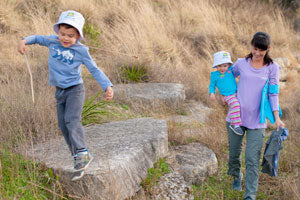Familial Melanoma: Genetics and Skin Cancer Risk
Posted on 23 February 2017

Can Your Genes Put You at Higher Risk for Skin Cancer? What you need to know about familial melanoma.
An estimated 87,000+ new cases of invasive melanoma will be diagnosed in the U.S. this year – the most serious type of skin cancer. You might be surprised to know that a small number of melanoma types might be genetic.

WHAT IS FAMILIAL MELANOMA
Familial malignant melanoma is a term usually referring to families in which 2 or more first-degree relatives, such as a parent, sibling, and/or child, have melanoma.
Cancer begins when healthy cells begin to change and grow, out of control forming a mass called a tumor. Overall, about 8% of people newly diagnosed with melanoma have a first-degree relative with melanoma. A much smaller percentage, about 1% to 2%, has 2 or more close relatives with melanoma.

THE GENETICS
To date, 2 genes have been primarily linked to familial melanoma; they are called CDKN2A and CDK4. A mutation (alteration) in one of these genes gives a person an increased risk of melanoma.

DOES FAMILIAL MELANOMA AFFECT TREATMENT?
Dr Carlos Gomez-Meade, skin cancer specialist and Little Leaves co-founder answers, “As far as we know, melanoma that is familial acts like any other melanoma."
“However, if someone has melanoma, their family members often have a lot of similar risk factors for melanoma, such as similar hair, skin color, and sun habits. We already tell someone with melanoma that all of their first-degree relatives need to get annual skin checks.”
What does change with familial melanoma is how closely we watch for other cancers besides melanoma that may develop in that person, including breast, kidney, or pancreatic cancer.

RISK FACTORS
People are at increased risk for melanoma if they:
- Have fair skin that freckles easily
- Have blue or green eyes
- Have red or blonde hair
- Have spent a lot of time in a tanning bed or have a sun-exposing job or hobby (such as farming, golfing or swimming)
- Have a lot of moles (Note: If you have moles, watch for the ABCDs — asymmetry, and change in border, color and diameter)

PREVENTION
Talk to your doctor if you think you may have inherited a higher risk of melanoma. He or she can help you watch for problems and advise you on how to protect yourself from other cancers in the future.
Anyone with a parent, sibling, or child who has had melanoma should be carefully monitored. It is important to watch moles closely for any signs of change in shape, size, or color.
In families known or strongly suspected to have familial melanoma, children should begin screening by age 10. Family members should also perform regular self-examinations to look for skin changes. Due to the high risk of multiple melanomas, people with familial melanoma should avoid sun exposure unprotected. The most effective and convenient form of sun protection is sun protective clothing, combined with sunscreen, hats and sunglasses for optimal protection.
Sources and Resources:
Can Genes Put You At Higher Risk for Skin Cancer
SkinCancer.org: Skin Cancer Facts
Cancer.net: Familial Malignant Melanoma
Melanoma Risk Factors and Prevention


0 comments